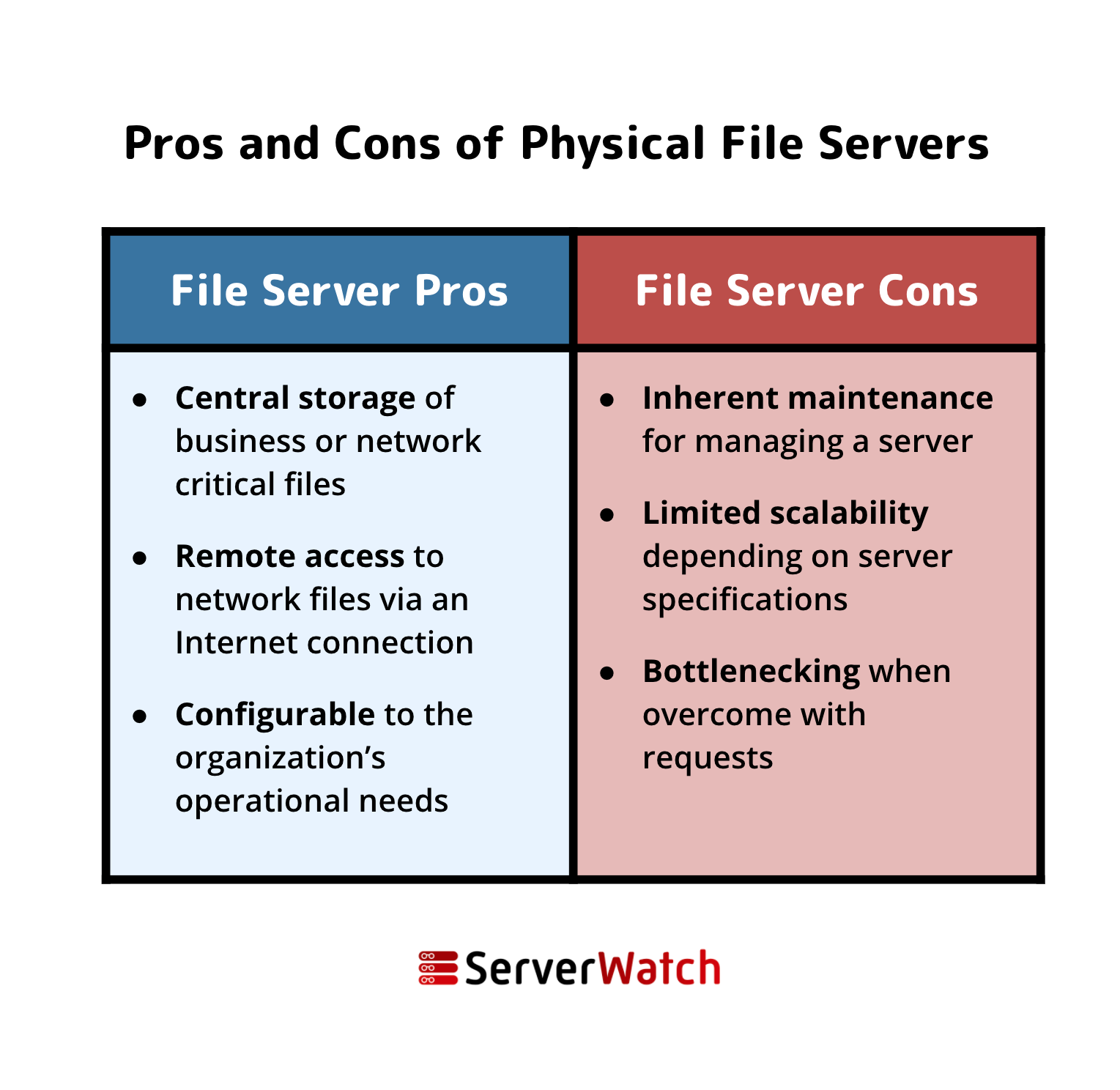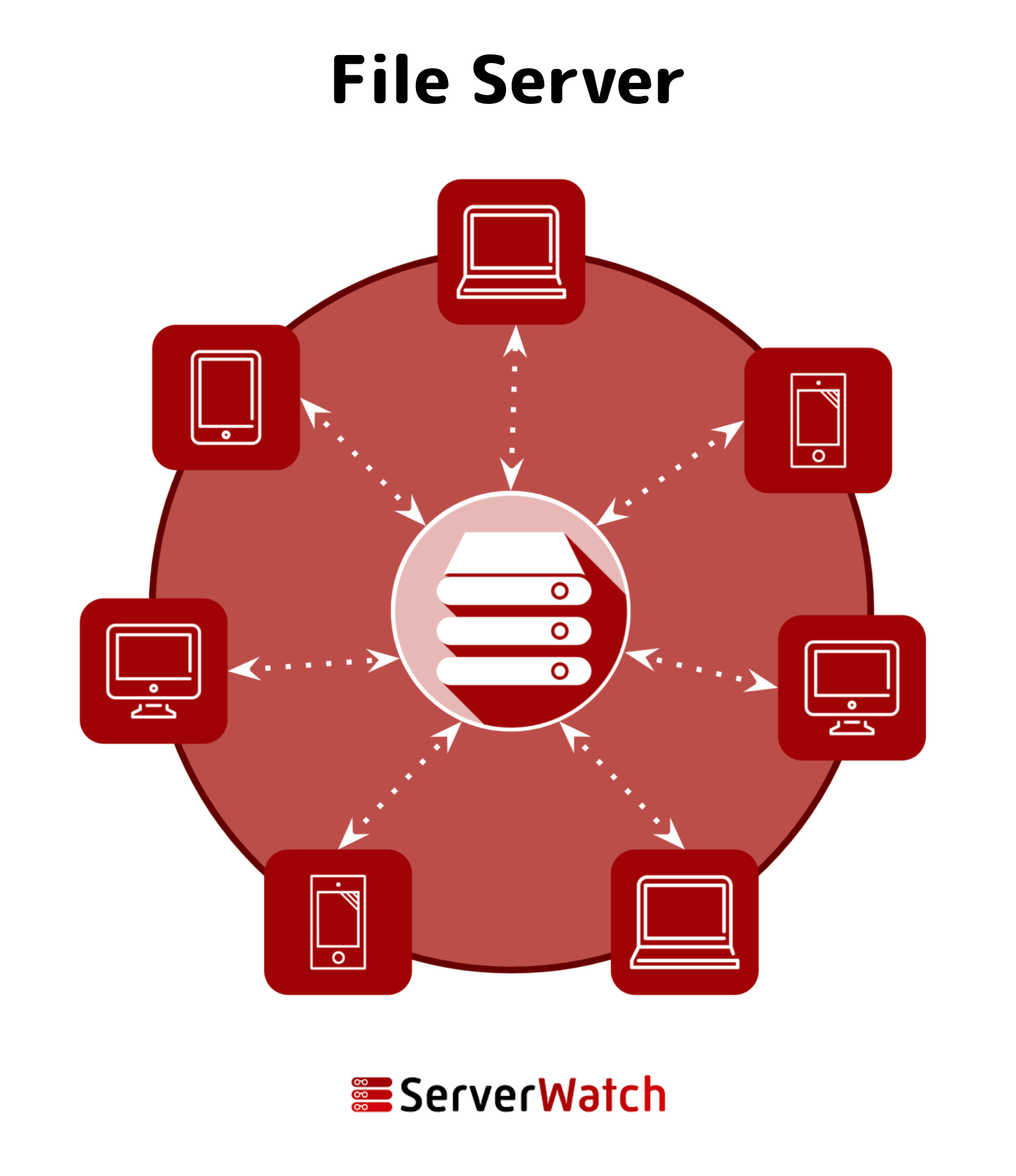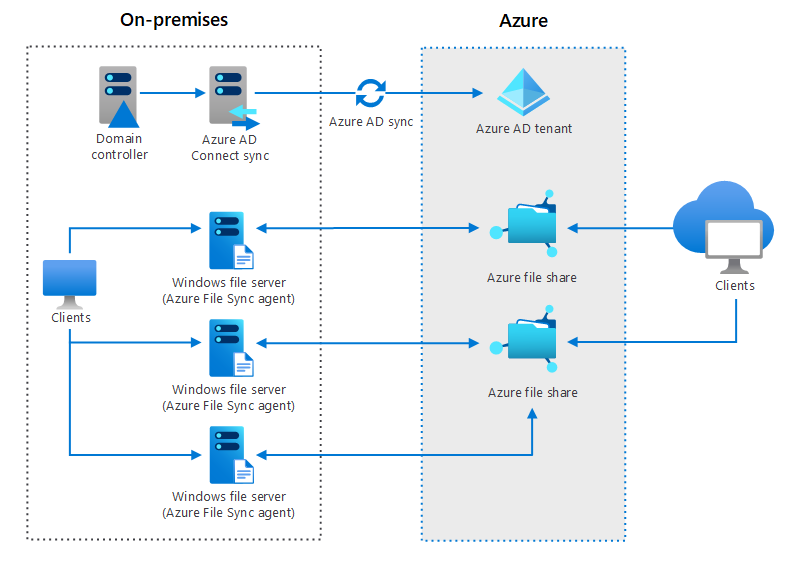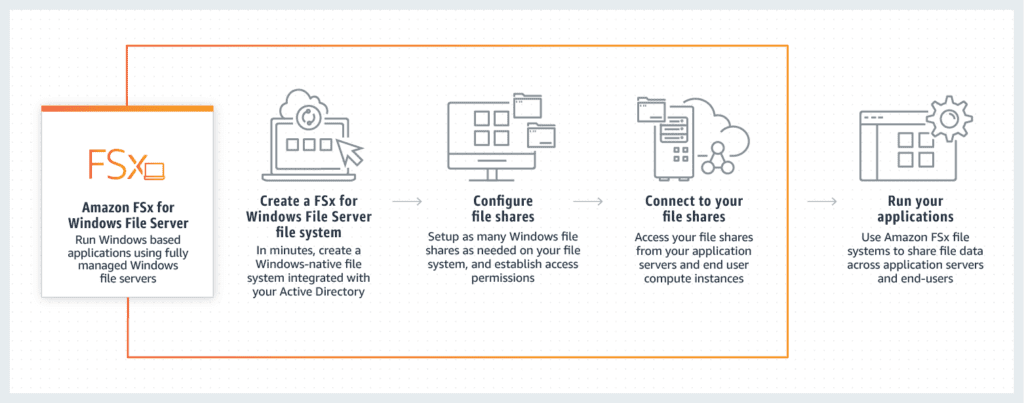

File servers are high-powered computers that enable data sharing for a network of users, devices, and clients.
One of the earliest uses of servers was for the simple storage and management of data on an on-premises network. File servers are a central database for the network where permitted devices can access files hosted by the file server, save progress after editing, and ensure the file remains secure beyond their local storage.
This article looks at what a file server is, how it provides resources to a network, and what file servers look like in modern applications.
A file server is a type of server responsible for the storage, access, and management of data files for a network of devices. Before file servers, users could save data files to their local hard drive or use a mobile storage unit — like a floppy disk or a USB stick. This presents two issues:
File servers resolve both of these roadblocks by offering a central repository of network data accessible to users, also known as clients.
Today, with a growing number of devices designed for on-the-go use, file server capabilities still play a critical role in securing files intended for a collective group of users. What’s changed is the multitude of on-premises appliances, software, and cloud systems that now fulfill the role of a file server.

It’s worth noting that the file server cons above apply more to the traditional perception of a file server in its physical appliance form. In the past, having a file server meant all of the responsibilities of managing a server. Today’s cloud-based solutions make file serving reasonably convenient.

Learn more about the top distributed? network resources on the market in our Best Load Balancers of 2021.
The above graphic shows how file servers work in a nutshell. At the back end of an office or a network’s data center, a file server devotes its operations to creating, storing, editing, and transferring files for use by client devices.
Similarly, cloud-based storage solutions like Box and Microsoft SharePoint have their own data centers devoted to hosting file servers for web users.
As file serving is a critical part of any operating network, one of the first offerings cloud service providers released was storage and file transfer solutions. Unlike their physical predecessors, cloud-based storage solutions are more scalable, cost-efficient, and easier to maintain.
As on-premises infrastructure remains a critical component of a developed network, cloud service providers offer hybrid file storage. Both on-prem appliances and cloud services work in conjunction to maximize security and access.

One example of a hybrid file storage and sharing system is the Azure architecture, as seen in the graphic above. Between existing on-premises Windows file servers and the organization’s Azure Active Directory tenant, both staff and external clients can use an ecosystem of file sharing that updates simultaneously.

Amazon Web Services (AWS) offers a few options for cloud file serving, but the above graphic highlights their online file server dubbed the Amazon FSx, which is designed to work for Windows-based systems. The visual touches on how clients can quickly get started by signing up, setting configurations, and establishing the flow between on-premises and cloud storage spaces.
Because file servers are one of the oldest network appliances, IT veterans know all too well how they present risks to data. While cybersecurity has become more complex, a file server for an organization is an excellent example of how a purposeful and worthy solution can also present inherent vulnerabilities. Whereas before, a sensitive file might only be accessible to one or two people, now a network of users might have access.
Unauthorized access and insider threats are the most significant risks to server cybersecurity when deploying a file server.
Want to learn more about vulnerabilities presented by cloud storage? Read eSecurityPlanet’s Guide to Cloud Bucket Vulnerability Management in 2021.
Property of TechnologyAdvice. © 2025 TechnologyAdvice. All Rights Reserved
Advertiser Disclosure: Some of the products that appear on this site are from companies from which TechnologyAdvice receives compensation. This compensation may impact how and where products appear on this site including, for example, the order in which they appear. TechnologyAdvice does not include all companies or all types of products available in the marketplace.